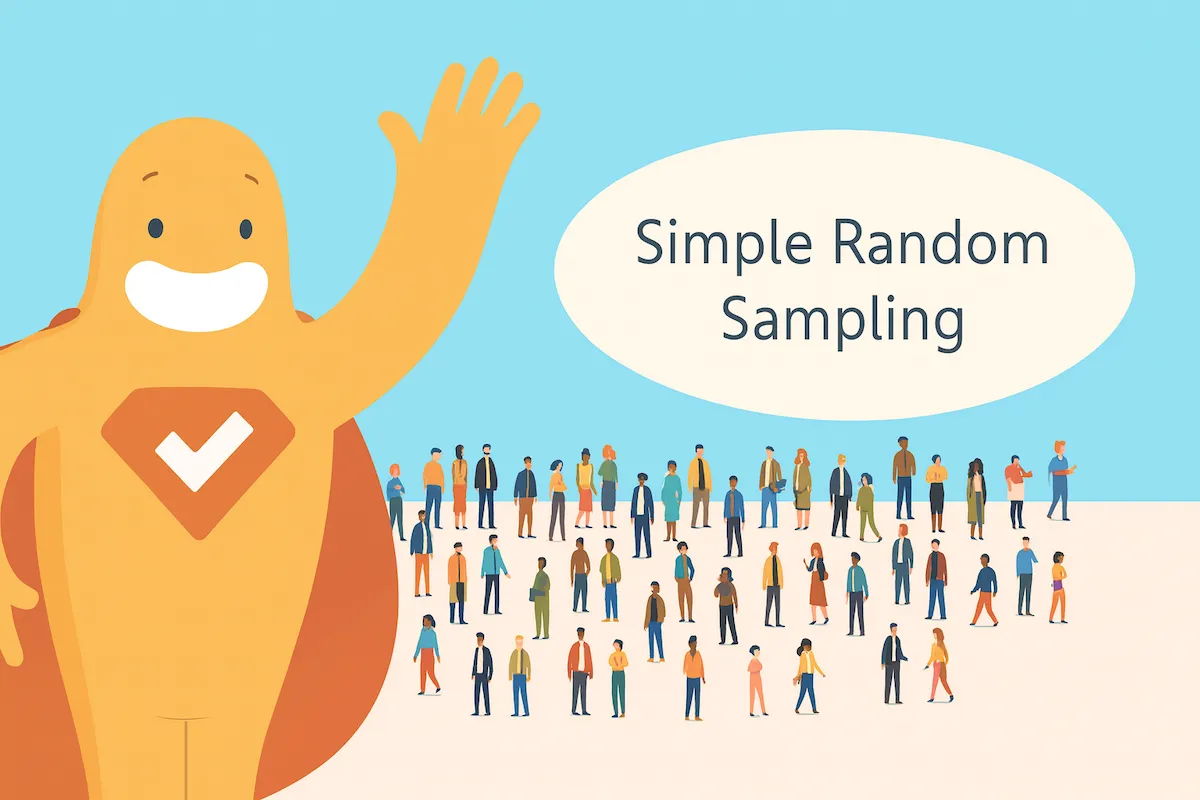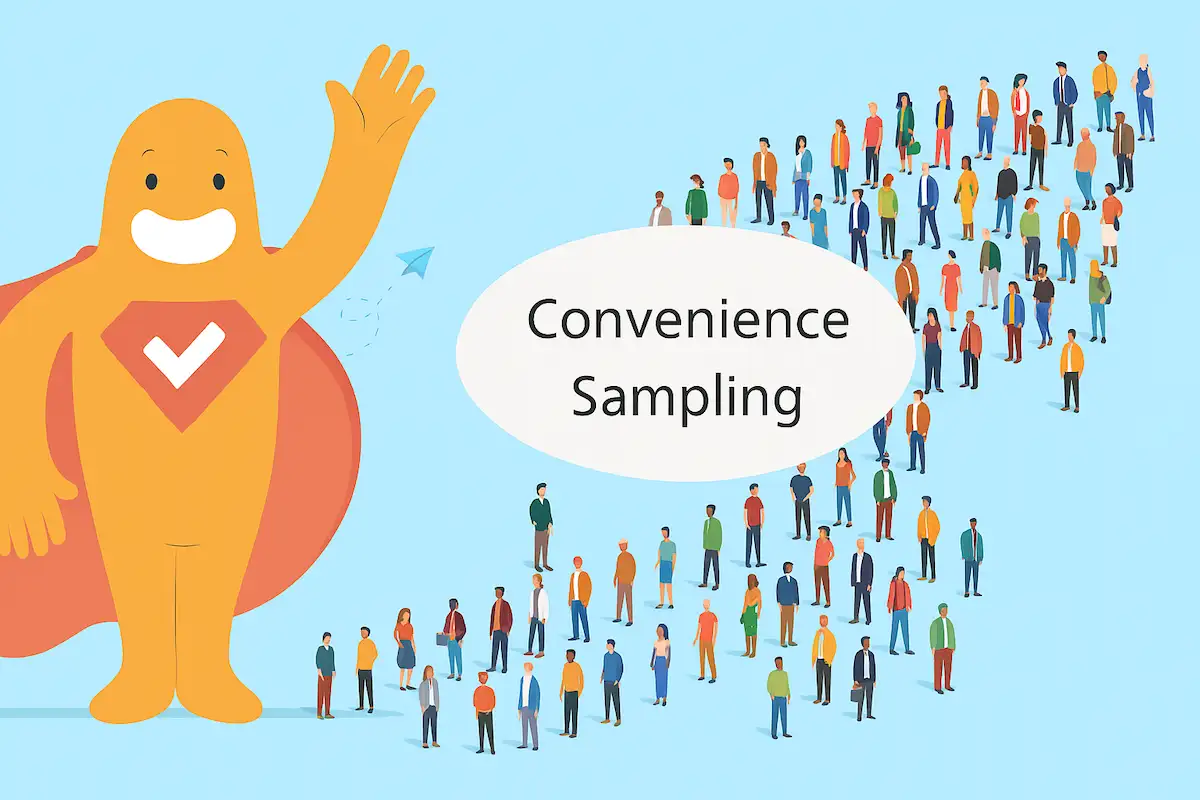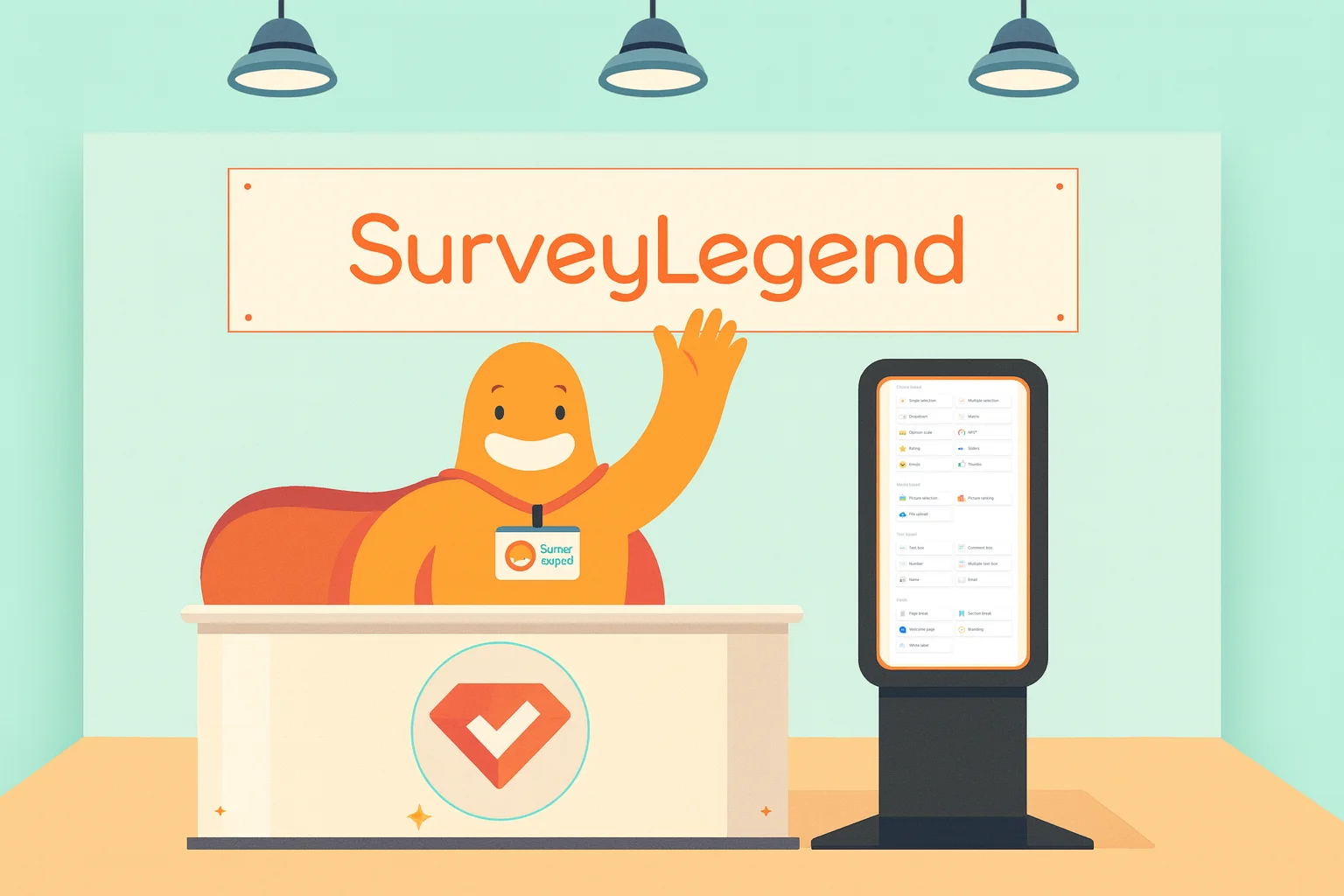Conferences and summits benefit significantly from collecting attendee feedback through targeted surveys that evaluate overall satisfaction, content quality, speaker performance, logistics, networking opportunities, and more, allowing for effective post event feedback. Well-structured pre-event, during-event, and post-event surveys offer organizers actionable insights that help refine future planning and execution. SurveyLegend offers powerful, free online tools for creating engaging and effective surveys with various question types and built-in analytics.
Key best practices include avoiding overly personal or biased questions, keeping surveys concise, and focusing on questions that yield actionable data. Proper analysis of survey responses helps measure attendee satisfaction, demonstrate return on investment (ROI), and support marketing to future attendees, stakeholders, and sponsors.
Conferences and summits are a significant business, accounting for $325 billion in direct spending in the U.S. alone each year, while supporting jobs, generating revenue for local economies, and boosting numerous industries. In anticipation of the upcoming Global Meetings Industry Day, an event held in March or April every year to draw attention to the economic impact the event industry has, SurveyLegend is prepared to provide you with a comprehensive survey template, a free online survey maker, and online survey software for your conference or summit surveying needs.
Create Your FREE Conference or Summit Survey Now!
Conference vs Summit
While both are considered events and often used interchangeably, what exactly is the difference between a conference and a summit, especially regarding specific topics covered for event feedback?
A conference is a broad term for gatherings of various sizes and purposes, ranging from academic and professional gatherings to industry-specific events and trade shows. Conferences may involve presentations, panel discussions, workshops, and networking sessions, catering to a diverse audience and covering a wide range of topics.
On the other hand, a summit typically refers to a high-level meeting between leaders or representatives of organizations or even nations, including members from the team responsible for organizing the summit. , often focused on discussing significant issues, making decisions, and formulating strategies. Summits tend to involve key decision-makers and have a more formal structure, which is essential for a successful event.
What is a Conference or Summit Survey?
A conference or summit survey is a questionnaire distributed to attendees of the event to gather feedback and insights about their experience, often including multiple-choice and open-ended questions, via online surveys. These surveys are created to assess the success of the event, identify areas for improvement, and understand attendees’ needs and preferences for future conferences or summits.
Surveys tend to ask about the quality and effectiveness of presentations, the relevance of topics, overall satisfaction, suggestions for improvement, and so on. Some surveys will also look outside the conference or summit content, asking for participants’ thoughts on travel arrangements, accommodations, venue, dining, etc., to gather insightful feedback, critical insights, and comprehensive survey responses that can be used as data and applied to the next event.
7 Key Areas of Inquiry and Conference Survey Questions To Ask
In any event survey, it’s important to ask questions that provide valuable insights into attendee experiences, preferences, and suggestions for improvement using a good survey tool. Depending on the type of conference or event you’re holding, you may have other key areas to survey about or may need to tailor specific questions to your event. However, here are some examples of questions you might consider including as you create a survey for conference feedback.
1. Demographic Information
- What is your occupation/industry?
- How many times have you attended this event?
- What is your level of experience in the field/topic covered by the event?
2. Overall Satisfaction
- How satisfied were you with the summit/conference overall?
- Rate the event on a scale from 1 to 10.
- What aspects of the event did you find most satisfying?
3 Content and Presentations
- Were the topics and sessions relevant to your interests?
- How would you rate the quality of the presentations and speakers?
- Did the content meet your expectations? If not, please explain why.
4. Networking Opportunities
- How important is networking with others to you?
- Were you able to find opportunities for networking with other attendees?
- Did you meet people who you believe will be valuable contacts in the future?
5. Logistics and Organization
- Was the registration process and event communications easy to understand?
- Did you use our online portal or app at the event?
- Did the event schedule and timing meet your needs?
6. Suggestions for Improvement
- What aspects of the event could be improved?
- Are there any topics or speakers you would like to see included in future events?
- Do you have any suggestions for enhancing the overall attendee experience, such as preferred formats for future event surveys or better scheduling?
7. Future Attendance
- Would you attend this conference/summit again in the future based on the overall satisfaction, quality of sessions, and event marketing?
- How likely are you to recommend this event to a colleague or friend?
- What would make you more likely to attend future events?
Create Your FREE Conference or Summit Survey Now!
What To Avoid on a Conference or Summit Survey
When creating your conference or summit survey, there are some things to avoid, such as questions that might be irrelevant, intrusive, or biased, or simply making your survey too long. By avoiding these pitfalls, you can help ensure that your survey gathers meaningful and actionable feedback from attendees and that people complete it instead of dropping off out of frustration.
Asking Too Much Personal Information
You want to capture demographic information, but you should avoid asking for personal information in the questionnaire if it is not relevant to the event’s purpose, such as income, political affiliation, or medical history. If that type of information is relevant, be sure to word your questions tactfully, perhaps including a text box for open-ended responses, and consider explaining in the introduction page’s confidentiality statement why the questions are being asked and how they will be used. Be sure to read our blog on Asking Sensitive Questions on a Survey.
Asking Leading Questions
A leading question does just what it says: It “leads” respondents toward the answer the survey-taker wants them to choose. A leading question on a conference or summit survey may ask, “How inspiring did you find the keynote speaker?” As you can see, this question implies that the speaker was inspiring and may bias the respondent’s answer. A better-worded question would be, “Did you find the keynote speaker inspiring?”
A loaded question is also considered a trick question because no matter how a respondent answers, they’re agreeing to something. For example, asking “Will you be back for another one of our innovative summits next year?” Here, even if the respondent replies “no,” they’re still agreeing that the summit is innovative. Read more about leading and loaded questions.
Asking Biased Questions
Survey bias occurs when “systematic errors are introduced into sampling or testing by selecting or encouraging one outcome or answer over others.” For example, double-barreled questions that put two questions into one, such as “Did you like the speaker and his presentation?” This question could have two answers, as the respondent may like the speaker but find the presentation lacking, or vice versa. So, it’s best to simply split it into two questions. You should also aim to avoid gender-biased questions, which you can read more about here.
Making Surveys Too Long
Most people don’t have the patience for a long survey. They may have just spent a week at the conference or summit and need to decompress! So, try to keep your surveys short if possible to improve response rates and effectively run post event surveys based on the collected data. You might even consider doing several microsurveys each day, sent via text once attendees have opted in. Your microsurveys could ask 5–7 quick questions each day. A quick survey like this is likely to be engaged with, plus this way you’re collecting feedback “in the moment” when insights, suggestions, or criticisms are fresh on the attendee’s mind.
Asking Questions Without Actionable Insights
To avoid survey fatigue, try to avoid asking questions that do not provide actionable insights or help improve future events. If someone doesn’t understand why you’re asking the pre event survey questions, they are going to think you are wasting their time, which could hinder your ability to uncover insights. So, rather than asking, “Did you enjoy the food?”, consider posing the question as “Would you like Bonefish catering next year, or a different catering service?”
Create Your FREE Conference or Summit Survey Now!
10 Steps to Creating a Conference or Summit Survey
Creating your conference or summit survey involves several steps to ensure that it effectively gathers feedback from attendees. Here’s a step-by-step guide to creating a survey:
1. Determine Survey Goals
Ask yourself what specific information you want to gather from attendees. Consider whether you want feedback on the content, logistics, networking opportunities, overall satisfaction of the event, or all of the above. This will help you define the objectives to guide the survey creation process.
2. Identify Key Areas of Inquiry
Break down the event into key areas that you want to evaluate. This may include content quality, speaker effectiveness, venue logistics, networking opportunities, etc. Each key area should have corresponding questions that address specific aspects related to it, as shown earlier in this blog.
3. Determine Number of Surveys
Best practices tell us that for conferences and summits, it’s best to conduct pre-event, during-event, and post-event surveys as they all have a different purpose.
4. Pre-event Questions
Consider what attendees expect, so you can put on a show that matches their expectations. You might ask for their thoughts on content, speakers, venue, length of stay, entertainment, and so on.
5. During the Event Survey
Questions that aim to collect feedback while attendees are in the moment and everything is fresh in their minds. You might also consider integrating online polls into the event using polling apps, devices, and plugins that work with attendees’ mobile phones. This provides real-time results that you can display right on the presentation screen. Check out our blog on the 10 Best Live Survey Tools and Hosting Polls.
6. Post-event Questions
Many of which have been covered in this blog, focus on collecting feedback from attendees to gain an accurate assessment of your event’s strengths and weaknesses.
7. Select the Survey Format
Will you send the survey via an online conference portal, through email, or by text? Perhaps you’ll have a kiosk at the event where attendees can complete quick microsurveys. Either way, consider the advantages and limitations of each format and select the one that best suits your needs and audience.
8. Design the Survey Questions
Craft clear and concise questions that align with the key areas of inquiry you previously identified to gather effective event feedback. Remember to avoid different types of survey bias. Also, it’s best to use a variety of question types to collect valuable data, especially if it’s not a quick survey. Include quantitative (multiple-choice, rating scales, etc.) and qualitative (open-ended questions) to gather diverse feedback and to mix things up, further engaging participants.
Also, be sure to sequence the questions, organizing them in a logical sequence. Start with general questions that suit your audience before moving to more specific ones. Group related questions together to maintain coherence and flow. This also helps keep the participant engaged.
9. Pilot Test the Survey
Before distributing the survey to all attendees, conduct a pilot test with a small group of individuals. Gather feedback on the clarity, relevance, and effectiveness of the survey questions. Then, make any necessary revisions based on the feedback received.
10. Analyze and Act on the Feedback
After distributing the survey and collecting responses, analyze the survey responses to identify trends, satisfaction levels, improvement areas, and actionable insights that can enhance future event planning and execution. You’ll want to use the feedback to make informed decisions about planning future events and achieving event success, refining content, enhancing logistics, and so on. Consider communicating any changes or improvements based on attendee feedback to let them know that their voices were heard (which may help improve attendance at future events as well).
10. Analyze and Act on the Feedback
After distributing the survey and collecting responses, analyzing survey results will help you identify trends, satisfaction levels, improvement areas, and actionable insights that can enhance future event planning and execution. You’ll want to use the feedback to make informed decisions about planning future events and achieving event success, refining content, enhancing logistics, and so on. Consider communicating any changes or improvements based on attendee feedback to let them know that their voices were heard (which may help improve attendance at future events as well).
Conclusion
Conferences and summits create surveys that are important for helping event planners understand the quality and effectiveness of presentations, the relevance of topics, overall satisfaction, and suggestions for improvement. SurveyLegend is a great survey tool for collecting feedback and creating a good survey that measures customer satisfaction and the return on investment (ROI) of their events by gauging attendee satisfaction, gathering testimonials, and ensuring a seamless experience while assessing whether the event met its objectives. This information, including survey responses data, and is valuable for demonstrating the value of the successful event and can also support your marketing efforts to potential attendees, stakeholders, and sponsors. You can explore ready-to-use conference event survey templates to get started quickly.
Create Your FREE Conference or Summit Survey Now!
Frequently Asked Questions
What is the difference between a conference and a summit?
A conference is a broad term for gatherings of various sizes and purposes involving presentations, panel discussions, workshops, and networking sessions. A summit typically refers to a high-level meeting between company leaders or representatives of organizations focused on issues for discussion, decision-making, and strategy planning.
Why are conference and summit surveys important?
They help event planners understand the quality and effectiveness of presentations, the relevance of topics, overall satisfaction, suggestions for improvement, and so on, and are a great measurement tool for determining the return on investment (ROI) of the event.
When should a conference or summit survey be distributed?
Most event planners conduct a pre-event and post-event survey, the former focused on what participants expect to see, and the latter focuses on whether the event matched those expectations. During the event, microsurveys may be distributed to capture insight in the moment or to share as part of presentations.



